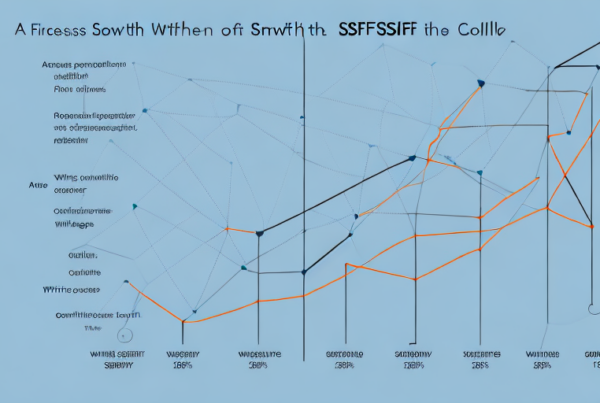As retirement looms closer, choosing the right super fund is becoming increasingly critical. With so many types of super funds available, it can be challenging to know which one is best suited for your needs, goals, and financial situation.
Understanding Super Funds
Retirement is an inevitable phase of life that everyone has to face. It is essential to plan for retirement to ensure a comfortable and financially secure future. One of the most popular and effective ways to plan for retirement is by investing in a Super Fund.
What is a Super Fund?
A Super Fund is a financial product designed to help individuals save for their retirement. It works by pooling contributions from its members and investing them to help grow their savings over time. The contributions can come from various sources, including employers, employees, and self-employed individuals.
Super Funds are regulated by the Australian government, and there are strict rules and regulations in place to ensure that they are managed effectively and efficiently.
Super Funds offer a range of investment options, including shares, property, cash, and fixed interest. The investment options available may vary depending on the type of Super Fund.
Types of Super Funds
There are mainly two types of Super Funds: traditional Super Funds and self-managed Super Funds (SMSFs).
Traditional Super Funds are managed by professional fund managers who make investment decisions on behalf of the members. These funds offer a range of investment options and are suitable for individuals who do not want to take control of their investments.
On the other hand, SMSFs allow individuals to take control of their Super Funds by making investment decisions for themselves. This means that the members of the fund are responsible for managing their investments, which can include shares, property, and cash. SMSFs are suitable for individuals who have a good understanding of investments and are willing to take on the responsibility of managing their Super Funds.
It is important to note that SMSFs come with additional responsibilities and costs, including the need to set up a trust and comply with legal and tax requirements.
Regardless of the type of Super Fund, it is essential to choose the right fund that suits your needs and investment goals. It is also important to regularly review your Super Fund and make any necessary changes to ensure that you are on track to achieve your retirement goals.
Traditional Super Funds
When it comes to planning for retirement, traditional super funds are a popular choice for many Australians. These funds are designed to help individuals save for retirement by pooling their contributions with those of other members and investing them in a range of diversified investment options.
Features of Traditional Super Funds
Traditional super funds are typically managed by professional fund managers, who make investment decisions on behalf of the fund members. These managers have the expertise and experience to navigate the complex world of investing and aim to achieve the best possible returns for their members.
One of the key features of traditional super funds is that they offer a range of investment options. These options may include stocks, bonds, and property, among others. By investing in a diverse range of assets, traditional super funds aim to reduce risk and provide members with a stable and reliable return on their investment.
Another important feature of traditional super funds is that they are generally regulated by the government. This means that they must comply with strict rules and regulations designed to protect the interests of their members. For example, traditional super funds must provide regular updates on their performance and fees, and must also have a complaints process in place to handle any issues that may arise.
Pros and Cons of Traditional Super Funds
Like any investment option, traditional super funds have their pros and cons. One of the main advantages of traditional super funds is that they offer lower fees than self-managed super funds (SMSFs). This is because the costs of managing the fund are shared among all members, making it more cost-effective than managing your own fund.
Another benefit of traditional super funds is that they are generally more effortless to manage. Because the fund is managed by a professional fund manager, members do not need to spend time researching and making investment decisions themselves. This can be particularly attractive for those who are not confident in their investment knowledge or who do not have the time to manage their own fund.
However, there are also some potential downsides to traditional super funds. One of the main disadvantages is that they may not provide the same level of control and flexibility as SMSFs. With a traditional super fund, members do not have direct control over their investments and must rely on the fund manager to make decisions on their behalf. This can be frustrating for those who want to have more control over their investments.
Another potential disadvantage of traditional super funds is that they may not offer the same level of customization as SMSFs. With an SMSF, members have the flexibility to invest in a wider range of assets and can tailor their investments to their individual needs and preferences. This level of customization is not always possible with a traditional super fund, which may limit the investment options available to members.
Overall, traditional super funds can be an excellent option for those who want a low-cost, hassle-free way to save for retirement. However, it’s important to weigh up the pros and cons carefully and consider your individual needs and preferences before making a decision.
Self-Managed Super Funds (SMSFs)
Self-Managed Super Funds (SMSFs) are becoming increasingly popular among Australians who want to take control of their super funds and investment decisions. SMSFs are a type of super fund where the members of the fund act as trustees and make all investment decisions on behalf of the fund. This allows individuals to have greater control over their investments and tailor their investment strategies to meet their specific financial goals and risk tolerance.
Features of Self-Managed Super Funds
SMSFs offer a broader range of investment options such as direct property investment, which is not available in traditional super funds. This means that members of SMSFs have the opportunity to invest in assets that they understand and have a greater knowledge of. SMSFs also allow individuals to take control of their asset allocation, which can be beneficial in times of market volatility.
Another feature of SMSFs is that they have the potential for higher investment returns. This is because SMSFs can invest in a wider range of assets, including direct property, shares, and managed funds. This allows SMSF members to diversify their investment portfolio and potentially achieve higher returns than traditional super funds.
Pros and Cons of Self-Managed Super Funds
While SMSFs offer many benefits, they also have some drawbacks. One of the main disadvantages of SMSFs is that they require a higher level of investment knowledge and time commitment. SMSF members need to have a good understanding of investment strategies and be willing to spend the time required to manage their investments effectively.
Another disadvantage of SMSFs is that they are subject to strict regulation and compliance obligations. SMSFs must comply with the Superannuation Industry (Supervision) Act 1993 and other regulations set out by the Australian Taxation Office (ATO). This can be challenging for most individuals to manage, and failure to comply with these obligations can result in penalties and fines.
Despite these challenges, SMSFs can offer greater control and flexibility over investments. Members can tailor their investment strategies to meet their specific financial goals and risk tolerance. They also offer the potential for higher investment returns. However, before deciding to set up an SMSF, it is essential to consider all the pros and cons carefully and seek professional advice to ensure that it is the right option for your financial situation.
Key Differences Between SMSFs and Traditional Super Funds
Control and Flexibility
One of the significant differences between SMSFs and traditional super funds is the level of control and flexibility they offer. SMSFs offer greater control and flexibility over investment decisions, while traditional super funds generally provide less control and limitation on investment options.
Investment Options
SMSFs offer a broader range of investment options such as direct property investment, shares, and term deposits, which are not available in traditional super funds. On the other hand, traditional super funds usually invest in a range of diversified investment options, such as stocks, bonds, and managed funds.
Fees and Costs
Traditional super funds usually charge lower fees than SMSFs since these funds pool members’ contributions and reduce costs such as administration, auditing, and compliance. SMSFs have more significant expenses, including accounting, auditing, legal fees, and investment fees.
Compliance and Regulation
SMSFs are subject to strict compliance and regulation requirements. Trustees of the fund must file annual tax returns, financial statements, and audit reports. They must also comply with superannuation laws to protect funds’ members. Traditional super funds are regulated by the Australian Securities and Investment Commission (ASIC) and the Australian Prudential Regulation Authority (APRA).
Factors to Consider When Choosing a Super Fund
Your Financial Goals
Your financial goals are a critical factor in determining the right super fund for you. If you aim to maximize your returns and control your investment decisions, SMSFs may be a suitable option. On the other hand, traditional super funds are suitable for individuals who value diversification and peace of mind in knowing professional fund managers manage their investments.
Your Risk Tolerance
Your risk tolerance is another key factor to consider. If you are comfortable taking risks in your investments, SMSFs may be a better option since you have more control over your investments. For individuals who prefer more low-risk investment options, traditional super funds may be more suitable.
Your Investment Knowledge and Experience
Your investment knowledge and experience should also be considered when choosing a super fund. If you have extensive investment knowledge and experience, you may feel more comfortable managing your SMSF’s investments. However, if you lack investment knowledge and experience, traditional super funds may be a more suitable option as they offer professional fund managers to handle your investments.
Time Commitment
Finally, you need to consider the amount of time you are willing to commit to managing your super fund. SMSFs require a higher time commitment, including keeping up-to-date records, financial statements, and organizing annual audits. On the other hand, traditional super funds require less time commitment since fund managers handle all the investment decisions and compliance obligations.
Conclusion
Deciding between a self-managed super fund and a traditional super fund can be a daunting task for most individuals. Consider your financial goals, risk tolerance, investment knowledge, and experience, and the time you are willing to commit before making a decision. Remember, each super fund type has its benefits and downsides, so choose the one that is best suited for your unique needs and financial situation.




